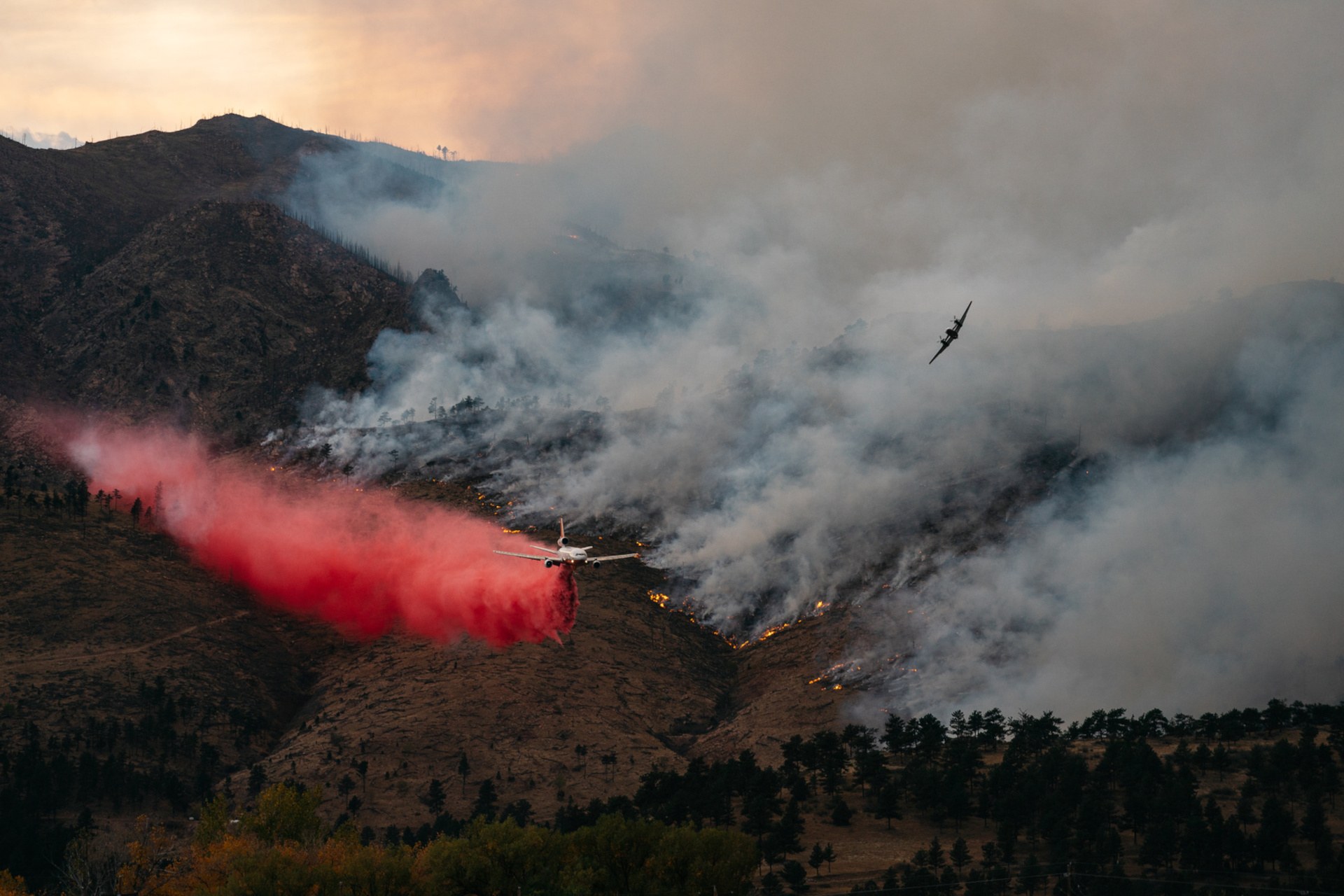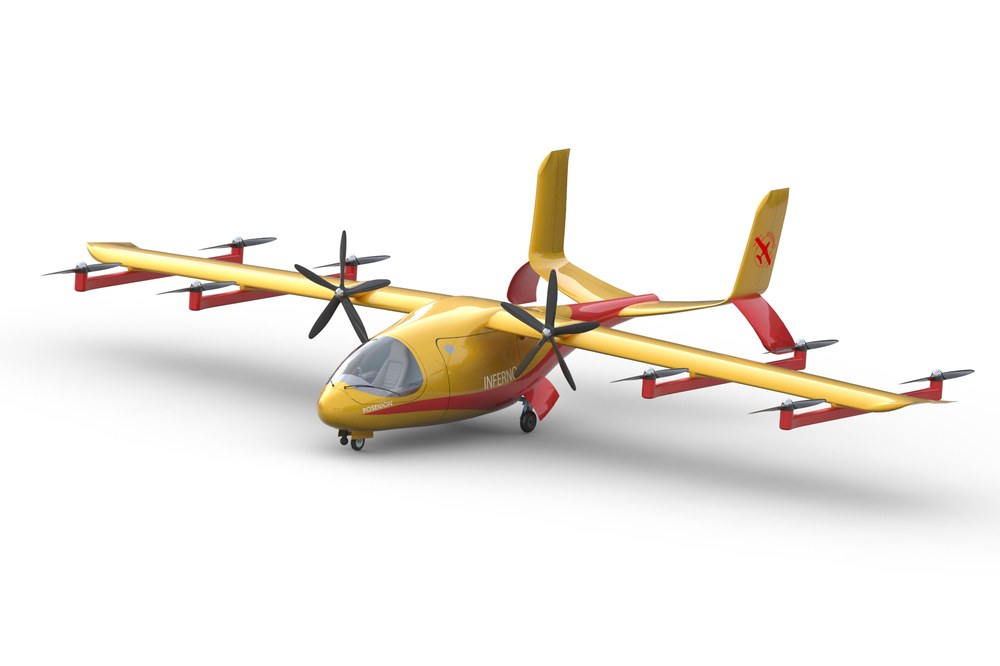Hot ideas

©Adobe Stock/Tandem Stock
This year's hot summer will be remembered for years to come. Reports of new forest fires made the news almost daily, including in Germany, while fires in France, Italy, Spain and Portugal destroyed thousands of hectares of forest and released large amounts of carbon dioxide. With climate change, such catastrophes may become a regular henomenon of the European summer. When areas of forest catch fire, emergency crews on the ground are often backed up by aircraft and helicopters in a bid to contain the flames. Aircraft are invaluable tools for slowing the spread of fire because they can drop large quantities of water on selected target areas. Unfortunately, this form of firefighting is very expensive and the technology used is often outdated. So, the DLR Design Challenge 2022 set students from all over Germany the task of developing new concepts for airborne firefighting.
The brief was challenging; teams had to design a fleet of aircraft that together could deliver at least 11,000 litres of water per flight to the location of the fire. Teams were free to specify any number of aircraft and a suitable delivery system. Since the aircraft had to be able to load water from nearby sources such as small lakes, rivers or the sea, they needed short or vertical take-off and landing capabilities. Each of the aircraft had to be able to be flown either by one pilot on board, from the ground or autonomously – including at night time and in poor visibility conditions. Modular design for production was also part of the mission requirement; concepts had to be structured in such a way that a single production line could produce an aircraft for firefighting, passengers or cargo transport. The hypothetical entry into service was scheduled for 2030. The six teams that applied were given four months to complete the task. "The difficulty this year was having to consider the interaction of the various systems involved on top of the design of the aircraft," said Markus Fischer, DLR's Divisional Board Member for Aeronautics and Chairman of the Jury, speaking at the award ceremony. He added: "All of the teams mastered these challenges and can be rightly proud of themselves."
"The difficulty this year was having to consider the interaction of the various systems involved on top of the design of the aircraft."
Markus Fischer, DLR's Divisional Board Member for Aeronautics and Chairman of the Jury of the DLR Design Challenge 2022
First place – INFERNO, from Stuttgart
This full-system specification inspired the winning team, from the University of Stuttgart. "It didn't seem so at first, but the deeper we delved into the topic, the clearer it became that we would need to get pretty creative to be able to meet all the requirements," says team leader Johannes Ritter. Their INFERNO concept uses eight horizontal rotors for vertical take-off and landing and two propellers for forward flight. The drive is hybrid-electric and can be refuelled with sustainable fuels. The flying vehicle has a scoop/inlet for taking water on board, but it can also use smaller bodies of water by partially submerging. INFERNO is controlled by a single on-board pilot, so the team put a lot of thought into the flight deck design and assistance systems – after all, it has to be flown safely even in poor visibility and at night. To save time during operations, the vehicle can also be refuelled in flight.
Second place went to the team from Dresden Technical University. Their PEL-E-FAN-T concept is an uncrewed aircraft featuring a hybrid electric power system. It can take off and land vertically and can therefore also use very small sources of water for extinguishing operations. The FireWasp compound helicopter from RWTH Aachen took third place. FireWasp combines the advantages of both helicopters and fixed-wing aircraft. The fleet consists of a reconnaissance vehicle and six firefighting aircraft – operating either autonomously or by remote control from a mobile ground station if required.
A generator of ideas and a step into the future
The DLR Design Challenge has been held since 2017. The DLR Institute of Aerodynamics and Flow Technology and the Institute of System Architectures in Aeronautics take turns organising the annual event. Topics have ranged from quiet, low-emission flying to supersonic passenger aircraft, climate-friendly light aircraft and autonomous, reliable aviation in urban areas using drone technology. "We attach great importance to the coherence of the students' concepts," says Björn Nagel, jury member and Director of the Institute of System Architectures in Aeronautics, which organised the competition this year.
For many participants, the annual competition is the start of more work: The HyBird concept of the 2019 winning team from the University of Stuttgart, for example, will be further developed by DLR's Innovation Center for Small Aircraft Technologies. RWTH Aachen University's 2020 winner, a parcel drone concept called Urban Ray, has given rise to a start-up. The students from the Technical University of Munich, who took third place in 2020 with the Mercurius hydrogen powered drone, continue to work on the concept. DLR also benefits from the Design Challenge; since the beginning of the competition, participants have been employed on a regular basis, continuing to build their aircraft design experience.
DLR Design Challenge 2022 top three
The team from the University of Stuttgart, consisting of Ahmet Günay Can, Hannes Kahlo, Benjamin Knoblauch, Nicolas Mandry, Prishit Modi and Johannes Ritter, designed INFERNO. This modular, hybrid electric-powered vehicle can be operated as a firefighting aircraft or used to transport people and goods.
Dominik Brunner, Hannes Jerzembek, Lennard Köhler, Paul Sanderbrand and Maximilian Wenk from Dresden Technical University designed the PEL-E-FAN-T. This unpiloted aircraft can be equipped with various modules. In fleet operations, for example, two vehicles can be equipped with a reconnaissance module in order to pass important information to the rest of the fleet, which will be equipped with firefighting modules.
The FireWasp compound helicopter was developed at RWTH Aachen University. The concept, by Mucahit Fatih Evliyaoglu, Selim Karakus, Dominik Kau and Robin Mörsch, uses a conventional gas turbine. By the time it enters service in 2030, the unmanned aircraft should be able to be operated entirely with sustainable fuels.
An article by Tobias Dietl and Patrick Ratei from the DLRmagazine 171




